Let’s take a closer look at the simple, yet complex circular mobility solutions called roundabouts.
Roundabouts have proven to reduce crashes by 44% and injuries by close to 80%, all while improving traffic flow and capacity. With an estimated 8,000 roundabouts in the U.S. and more being designed and implemented by the day, it’s a great time to explore how roundabouts work, the ways in which they benefit drivers and pedestrians alike, and the various designs available to your community.
Roundabouts: How They Work
A roundabout is a circular intersection designed to keep traffic flowing smoothly in one direction around a central point. Roundabout design is an iterative process that requires a good balance of the geometric design parameters including the inscribed diameter, entry radius and the exit radius. These parameters geometrically control speeds and allow for a smooth traffic flow. Traffic volumes, pedestrian volumes, design vehicle, surrounding property and approach speeds all influence the design.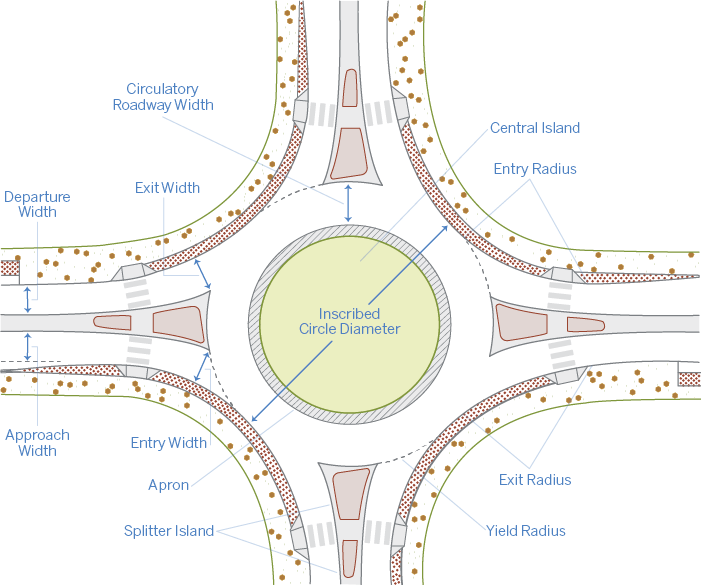
Now that we better understand the different parts of a roundabout, here is a look at some of the more common applications.
Related: Roundabouts 101: Basic Design Principles for Improved Intersection Safety
Mini Roundabout
Conventional roundabouts take up a lot of space and, as a result, cannot be used in every circumstance. Enter the mini roundabout. These smaller roundabouts have a mountable central island, making for a smaller footprint. This allows larger trucks to drive over the central island while still encouraging most vehicles to navigate on the circulatory road surface. This design is a good option when slower speeds are needed in tight urban settings.
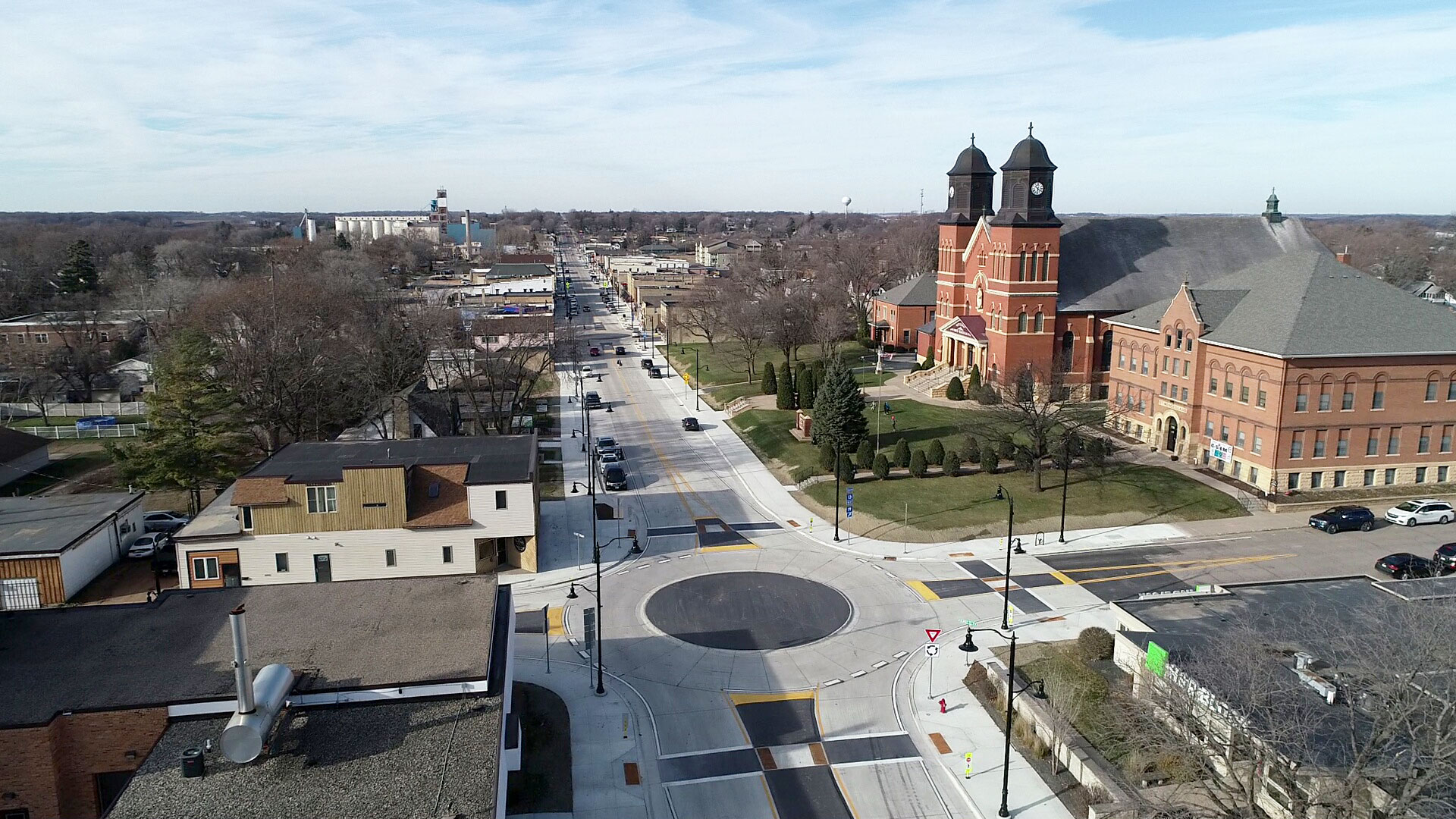
Single-Lane Roundabout
As their name suggests, this form of roundabout contains a singular lane circling around the central island. This is the safest and most basic form of the roundabout intersection style.
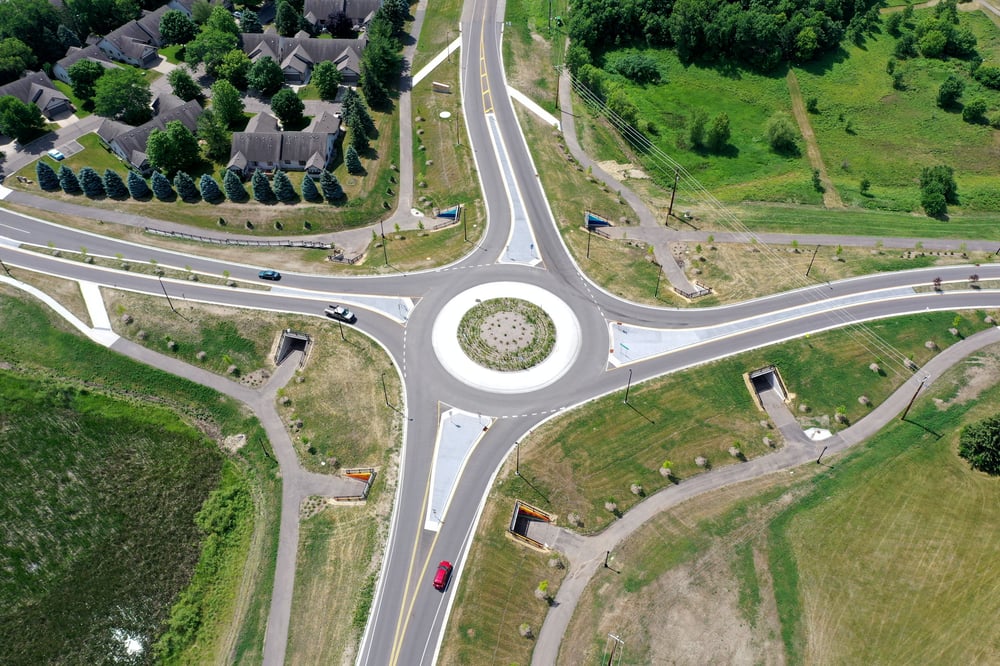
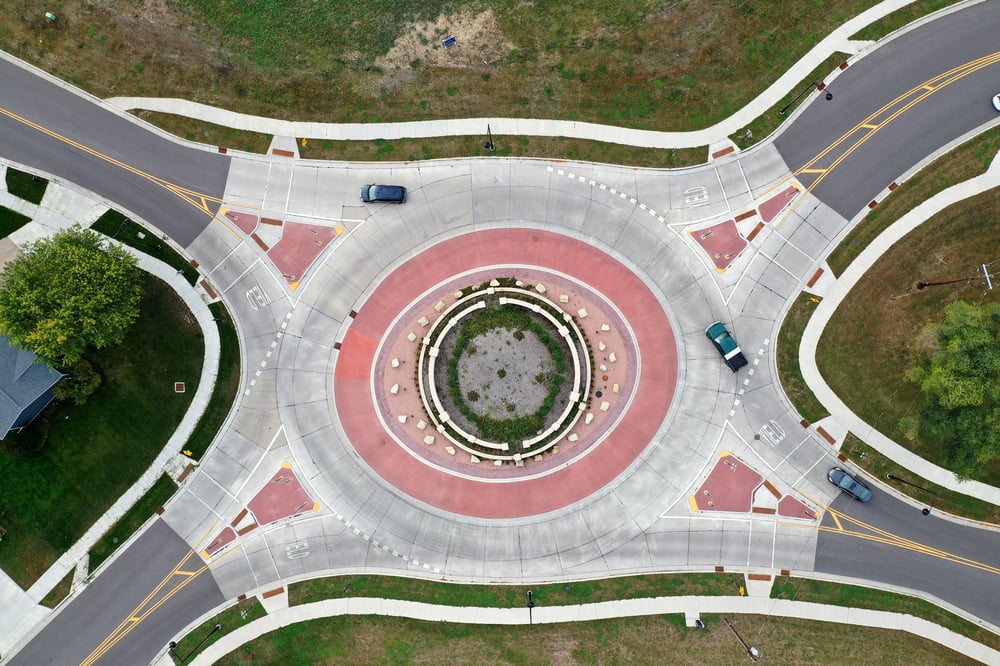
Multi-Lane Roundabout
Also, as its name suggests, multi-lane roundabouts have more than one lane. This is the most common form of roundabout in the U.S. Typically, the inside lane is used to make left turns and through movements while the outside lane is used to make the second through movement and the right turn.
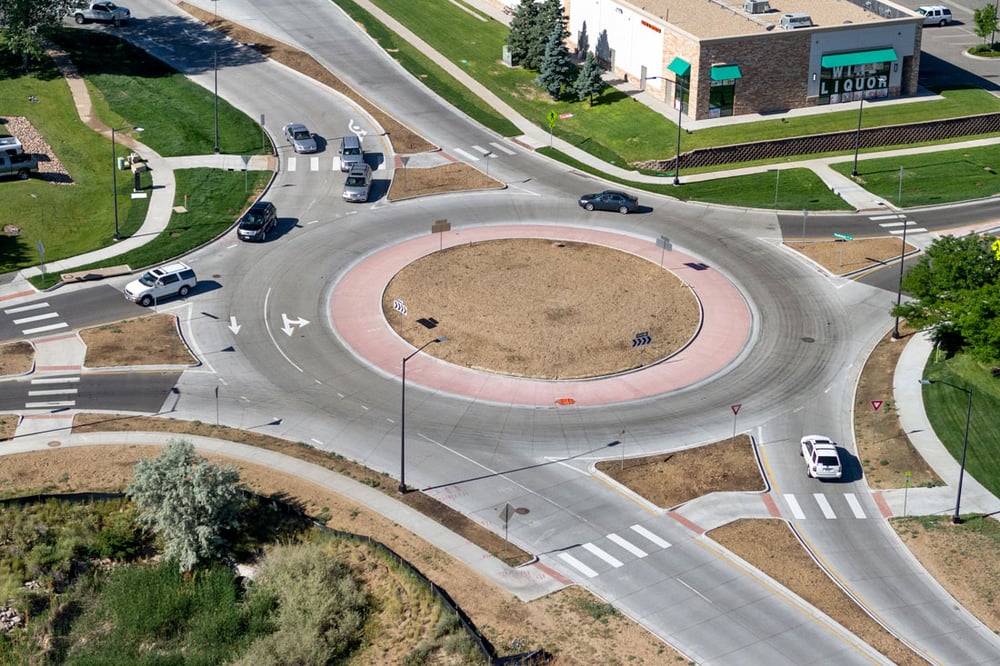
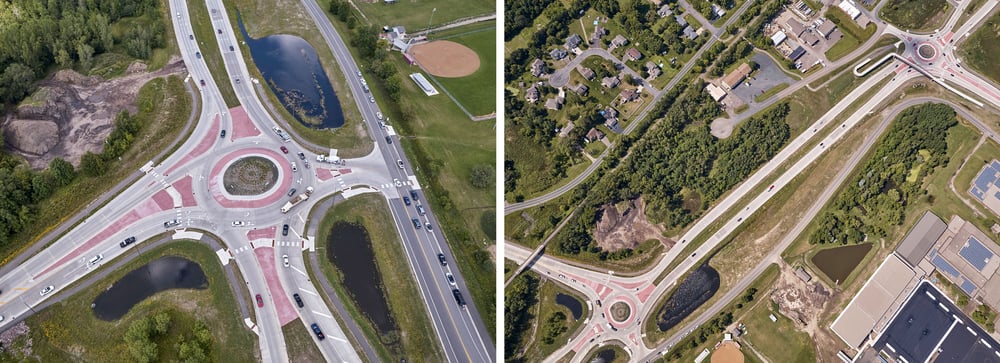
Turbo Roundabout
A turbo roundabout is a relatively new type of roundabout with a spiraling flow of traffic, requiring drivers to choose their direction before entering the roundabout. This type of roundabout is believed to be a safer and more efficient alternative to the standard multi-lane roundabout.
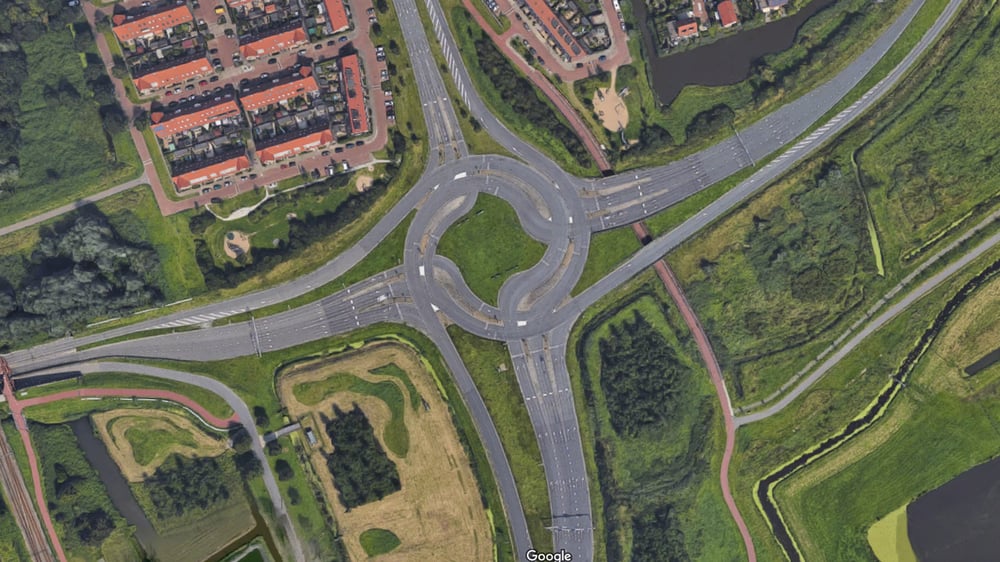
Roundabouts with Large Over-Size Over-Weight (OSOW) Vehicles
A typical roundabout has narrow curb-to-curb widths and tight turning radii, which are not ideal for large and oversized vehicles. An OSOW roundabout is designed to accommodate larger vehicles with wider truck aprons with a minimum slope and mountable curbs. Roundabouts have design flexibility making them a viable alternative at nearly any intersection regardless of design vehicle size.
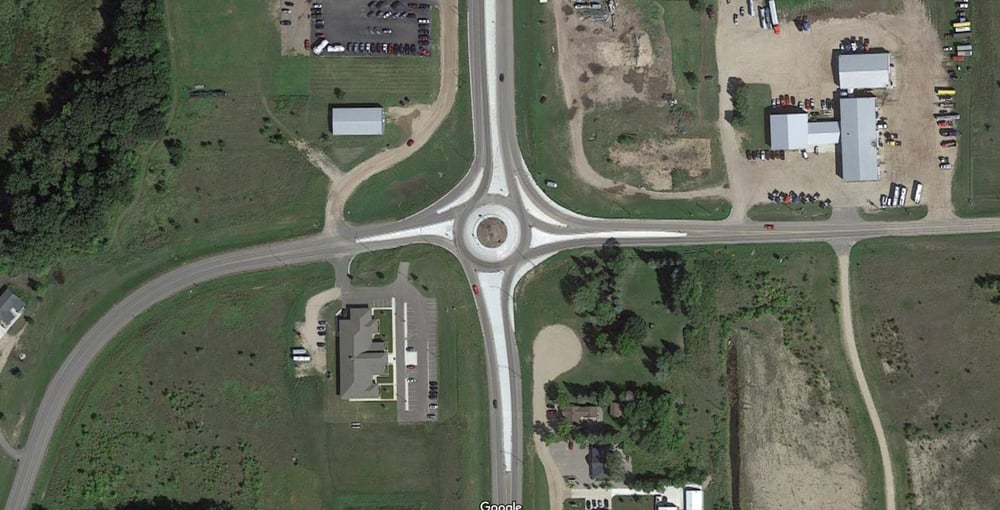
Roundabouts at Interchanges
A roundabout interchange typically occurs between a highway or freeway and a minor road. Drivers enter the roundabout after exiting the highway, and before the adjoining the minor road. These roundabouts are typically grade-separated from the highway and create an easy transition between the different roadways. These interchanges are usually more cost effective than a traditional signalized interchange due to the smaller bridge width required for roundabouts.
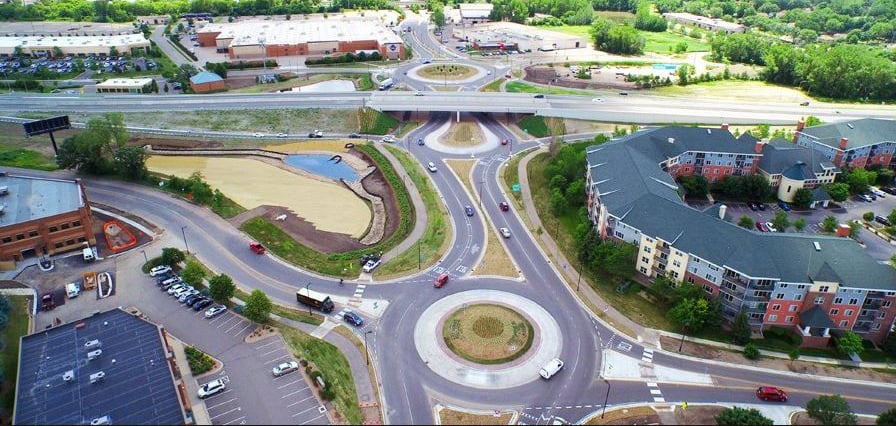
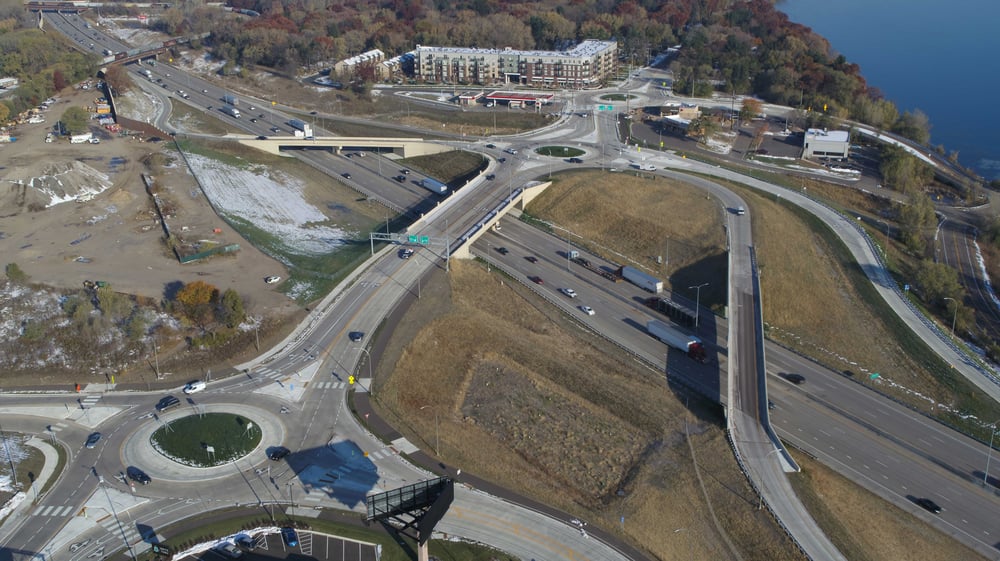
Roundabout Crossover Interchange
A roundabout crossover interchange follows the same general principle as a diverging diamond interchange (DDI). The DDI uses roundabouts instead of signalized ramp terminal intersections which avoids backups and keeps traffic flowing. While a traditional DDI does not allow through movement from the ramps or a fifth or sixth leg, the roundabout crossover interchange does.
This type of interchange works well with heavy turns to and from the highway, much like a traditional DDI. Both the roundabout crossover interchange and the DDI handle traffic more efficiently than a traditional diamond interchange.
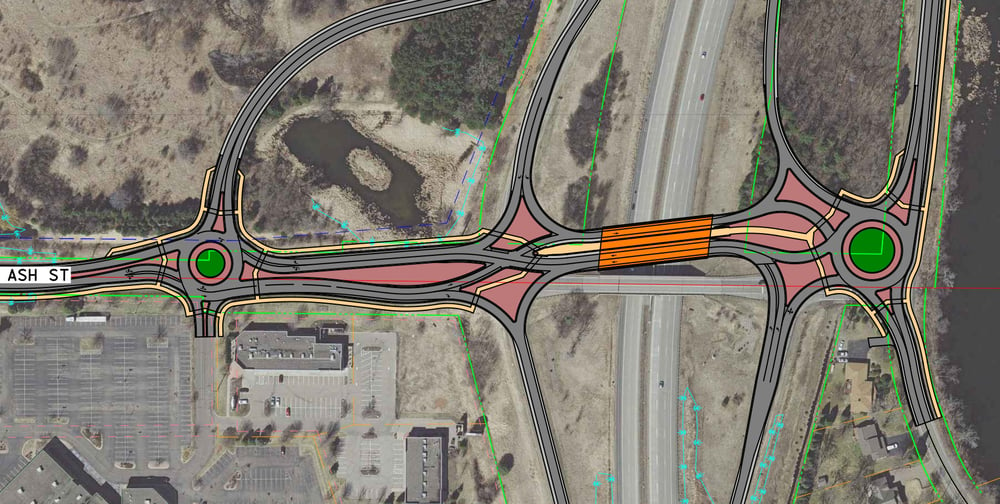
Roundabout Single Point Urban Interchange (SPUI)
A roundabout single point urban interchange moves all ramp and minor road movements into one intersection, in this case a roundabout. This interchange has various forms, including with the minor roads positioned either over or under the highway. Roundabout SPUIs can be offset to equalize the spacing between the minor street intersections near the highway.
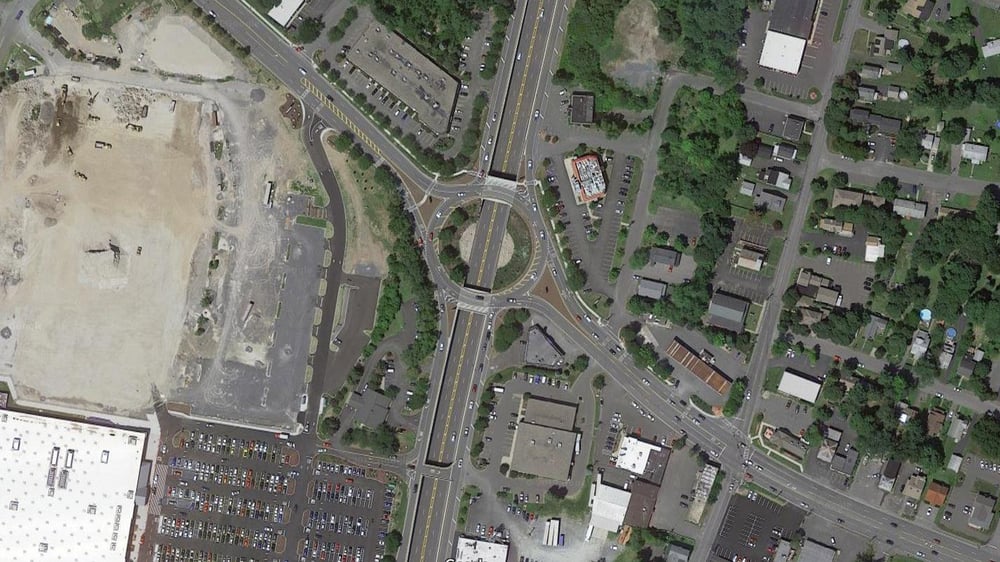
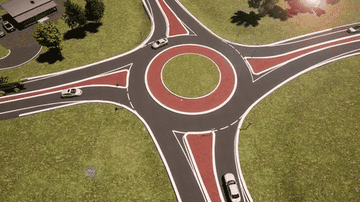 Circles: The Simple, Complex Solution
Circles: The Simple, Complex Solution
When implemented correctly, the circle is a simple geometric shape that can be used for complex mobility solutions. Whether one, two or three lanes − the possibilities are endless to keep the traveling public safe and traffic moving smoothly.
About the Author

Scott Hotchkin, PE*, is an SEH roundabout design professional who has designed 200+ roundabouts across the country. Scott is often called upon to help decision-makers determine whether a roundabout is an appropriate intersection design treatment for their particular site and community.
*Registered Professional Engineer in CO, IL, IN, IA, MN, NE, NC, SD, TX, VA, WI


